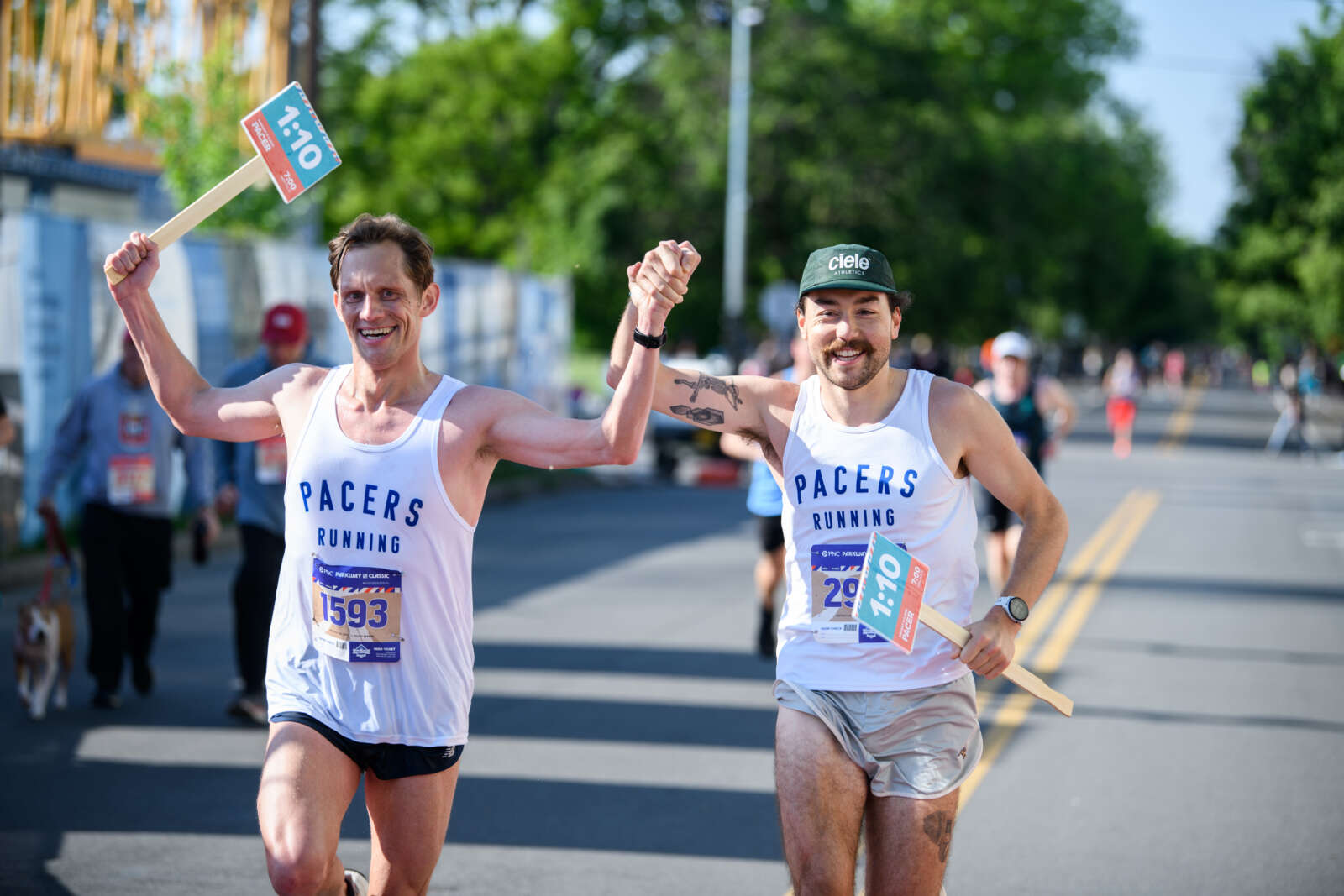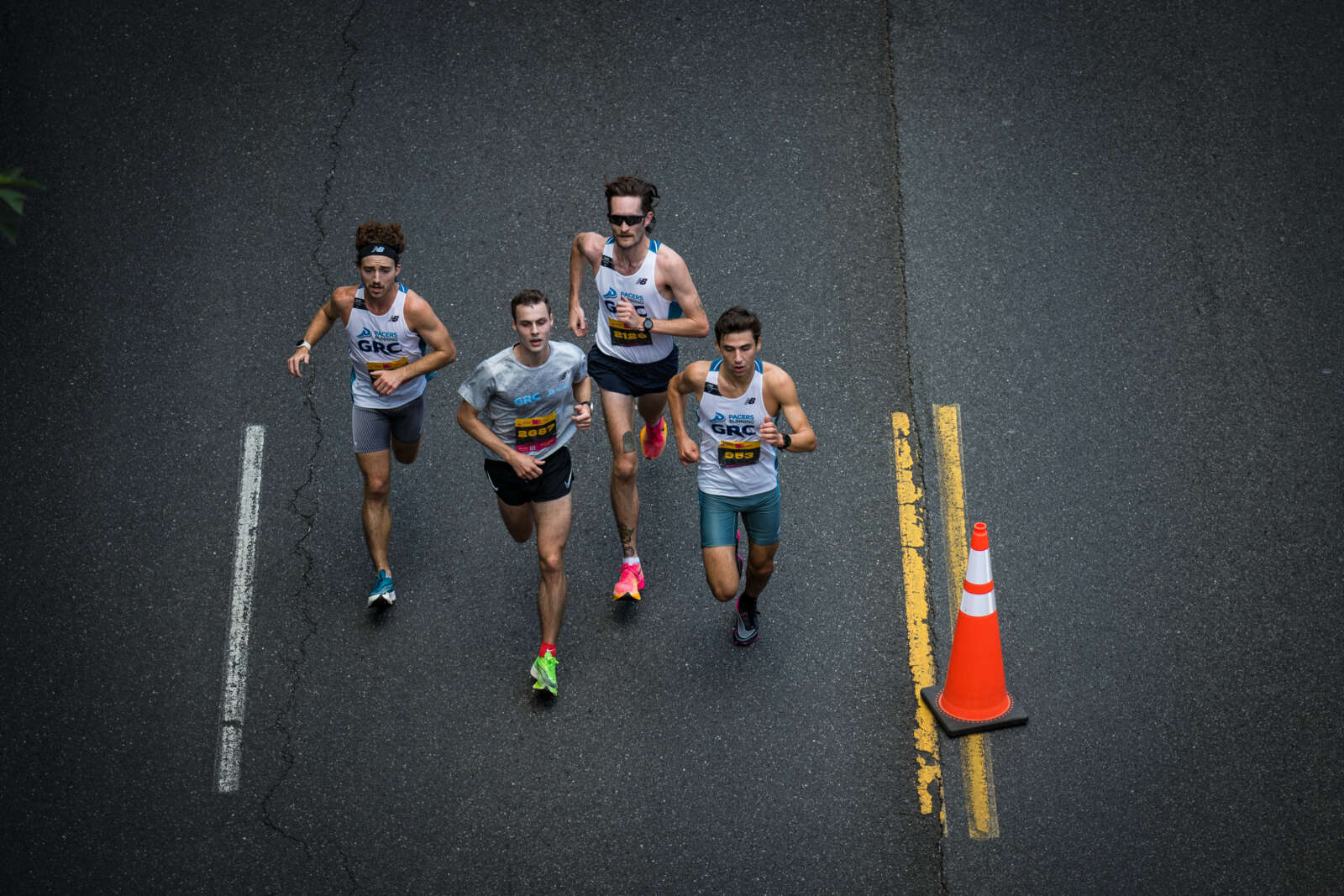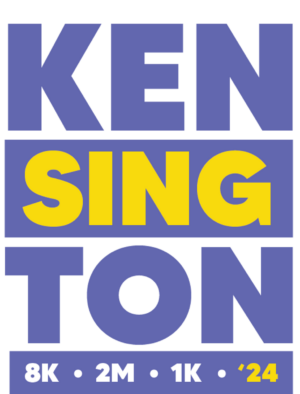Chantilly Coach Matt Gilchrist offers his thoughts on the nascent club cross country movement. This is a good reminder that RunWashington welcomes input on issues related to Washington, D.C.-area running on all levels, and if you have thoughts to share, contact Charlie Ban at charlie(at) runwashington (dot) com.
The sun rises over Burke Lake and it’s 7 a.m. on an August morning. We’re the first ones there, the first Monday of a new cross country season, with all the promise and potential that lies ahead. We are brimming with enthusiasm and filled with confidence and energy that is gained by a full summer of group conditioning, motivated for another successful fall season. This has been the same ritual that we’ve practiced year in and year out, but this year when August came, we stayed home. For the first time in my 25 years of coaching, there have been no practices at Burke Lake. Instead of heading to Lost River, W.Wa. for our annual team camp, we all stayed home. The motivation hasn’t changed and the hunger to run and to compete is still there, but in the world dealing with COVID-19, these annual rites of passages are chief on a list of things that we are missing out on.
There is no denying that our student-athletes miss sports. There is no questioning the benefit to them participating, just as we have debated over the best ways to re-open schools this fall. Running cross country (or participating in any sport) is beneficial to our emotional and mental health, our physical development, and being amongst teammates is a vital link to some level of socialization that many of us have missed over the last six months.
The Virginia High School League has had to make some tough decisions over when and how to re-schedule upcoming seasons. This year will not look like most years we have become accustomed to, and the uncertainty of what may or may not happen is very real and weighs on a lot of us. Fairfax County Public Schools has had to adopt some very stringent guidelines regulating how teams can gather and what they can do under the current global conditions as they attempt to balance the need to re-integrate sports. Many of the guidelines have been prohibitive in nature, and I know of a lot of coaches from all sports who have decided not to get together with their athletes and teams, simply because they felt it was either unsafe, or they were too restricted in their activities to make gathering worthwhile.
An effect of these circumstances is to consider what my role as a coach is right now. I am as competitive as the next person, and I am proud of the fact that I have coached teams over the years who have bought into my philosophies of working hard, being dedicated to team goals, and running their hardest to reach post-season success. I am always delighted by the fact that kids on my teams dream big. I am even more proud of the fact that they have chosen to operate within the guidelines given to them, not taking shortcuts, even when it’s easier, and especially when it is hard to determine what the “right” thing to do is.
As a high school coach, I believe that part of my role is to model good sportsmanship and to embrace fairness. I also believe that part of my role is to ensure safety, and to make sure my student athletes follow those guidelines, in practice and in competition. From my standpoint, and I believe for all county high school coaches, the guidelines are set forth very clearly by the state governing body and by FCPS. I believe that their decisions are based upon what scientists are recommending and are in the best interests of keeping our student-athletes safe. The guidelines may seem restrictive but they have been imposed in the name of curbing the spread of a pandemic that does not discriminate, providing at least some opportunities for students to engage in activity and for teams to gather in some manner.
Unfortunately for some of us, we are also being faced with a crossroad that is club sports. Whether these are clubs promoting cross country or other more long-standing clubs in sports like volleyball, lacrosse, soccer, basketball, baseball or softball, these teams don’t operate under the same organizational umbrellas as the VHSL or FCPS. As these teams continue to practice and compete using whatever safety guidelines they choose to employ, the message that we need to be promoting social distancing gets muddled, and in the process may ultimately place our student-athletes and seasons in further danger.
One of the aspects to social distancing has been to limit the bubble of people with whom we come into contact. To a certain extent, we can do that while engaging in team conditioning sessions. According to FCPS policy, teams are limited to no more than 50 participants in a conditioning session, in a given area, including coaches and athletes. These sessions are limited to current athletes only. Participants must complete a health screening when they arrive and have a temperature check. Athletes who do not pass the survey or who have temperatures higher than 100.4 are sent home immediately and cannot return until cleared. The efforts to make sure that spacing is controlled is very detailed and runners cannot leave campus during their workouts. There is no sharing of any sort of equipment or water bottles.
This is all in contradiction to what the athletes can see every day on playing fields, where other athletes are found on their own, or in non-school club activities which include passing balls around, or engaging in contact activities, with little to no consideration to what the formal guidelines are. When student-athletes are faced with opportunities to join clubs who are competing in tournaments or are training in larger groups, the message is sent that this is acceptable, that things are safer than advertised, and that perhaps they should be doing the same. Athletes (and parents) start questioning why they should be operating between the lines, when there are other avenues to follow that may be more lenient and allow more freedom to act in a more “normal” fashion. This is a natural line of thinking, especially amongst runners and coaches who have been cooped up for so long, and just want to get back to doing what we are used to, and what we all love.
Things get even more blurred when you start hearing about coaches who are working in club settings. While I have no sense that any coach is breaking the rules, either in terms of employment or with the safety guidelines, I still have questions. Should we, as high school coaches, be viewing clubs as a means to try to build up our teams to prepare for upcoming seasons, or should we be setting the example that we should be following the guidelines to a tee and seeking to mitigate the pandemic so we can move on safely in the future? Is this the responsible course of action? Do the rewards of getting our kids out together to train outweigh the risks of spreading the COVID-19 virus to multiple programs, by expanding individual bubbles? Do coaches have a responsibility to embrace not only the letter of the rules, but the spirit under which they were made? Many of us are used to thinking outside of the box when training gets interrupted. Runners are used to dealing with adverse conditions, and have been known to shovel snow off tracks to get a workout in or get on treadmills when the weather is too difficult to run outside. We follow training schedules when we travel, some completing workouts on the decks of cruise ships, around parking lots in airports, and on all types of surfaces and neighborhoods to avoid a setback. We are a motivated, creative bunch.
But is this the time and place to search for loopholes? Should we be looking for alternatives for training, outside the auspices of FCPS, in order to build our runners and teams? Is it perhaps better to provide some framework for training, and leave it up to an individual athlete’s sense of motivation to do the work? I can say that from my team’s perspective, and from those of several other veteran coaches, we have given out training schedules going back to last spring, and emphasize the message that safety comes first. Obviously, it is better when you can run in groups or get direct coaching, but you have to do so in a safe manner, and only within the confines of what kids and their parents are comfortable with. I can say that our team gets together once a week, just to make formal contact, and I understand that it is an arduous process, one that is much more limiting that what we are used to. I also understand that this is what the county has said is safe, and that safety should be the overlying guideline to all our decision making.
These are not always easy decisions. Some parents have asked why we don’t promote club activities or run virtual races. I have parents who are worried about how their athletes will get recruited to colleges, or how the interruption will stunt their development as runners. I have also had parents who have stated that these larger groups are tempting fate, in terms of spreading the virus, which could slow down the process of returning to play. The only thing I can say to my team is that we will continue to operate within the guidelines of safety and fair play. I understand that parents (and kids) may have different perspectives about so many different aspects of this pandemic, but as a coach, I do believe that it is my job not only to keep my own kids safe, but also to model and promote safety for our sport. I don’t believe that this is a time to be skirting the rules but to acknowledge the limitations, and to do everything possible within the guidelines to be safe, prepared, and to work to inspire, motivate, and develop our teams as a collective unit and as individual athletes.
These have been trying times, and it is hard to stay patient. It becomes more important to adhere to the guiding principles that we as coaches and as runners should embrace, and keep our eyes on the big picture. This too shall pass, and we will eventually be able to get back to those rites of passage that we miss so much, and hopefully be able to acknowledge that we dealt with things the right way.
Recent Stories
Looking for our race calendar? Click here Submit races here or shop local for running gear
James W. Foley Freedom Run
Inspired by the moral courage of freelance journalist James Foley, the mission of the nonprofit Foley Foundation is to secure the freedom of Americans held captive abroad unjustly by terrorist organizations or rogue states, and to promote journalist safety.
The
Kensington 8K Race
Since 1994, the Kensington 8K Race has been a favorite DC area fall race – a fun, fast event with beauty, challenge, and excitement. Run it this year on Saturday, September 21, 2024!
The 8K distance is $39, with a






